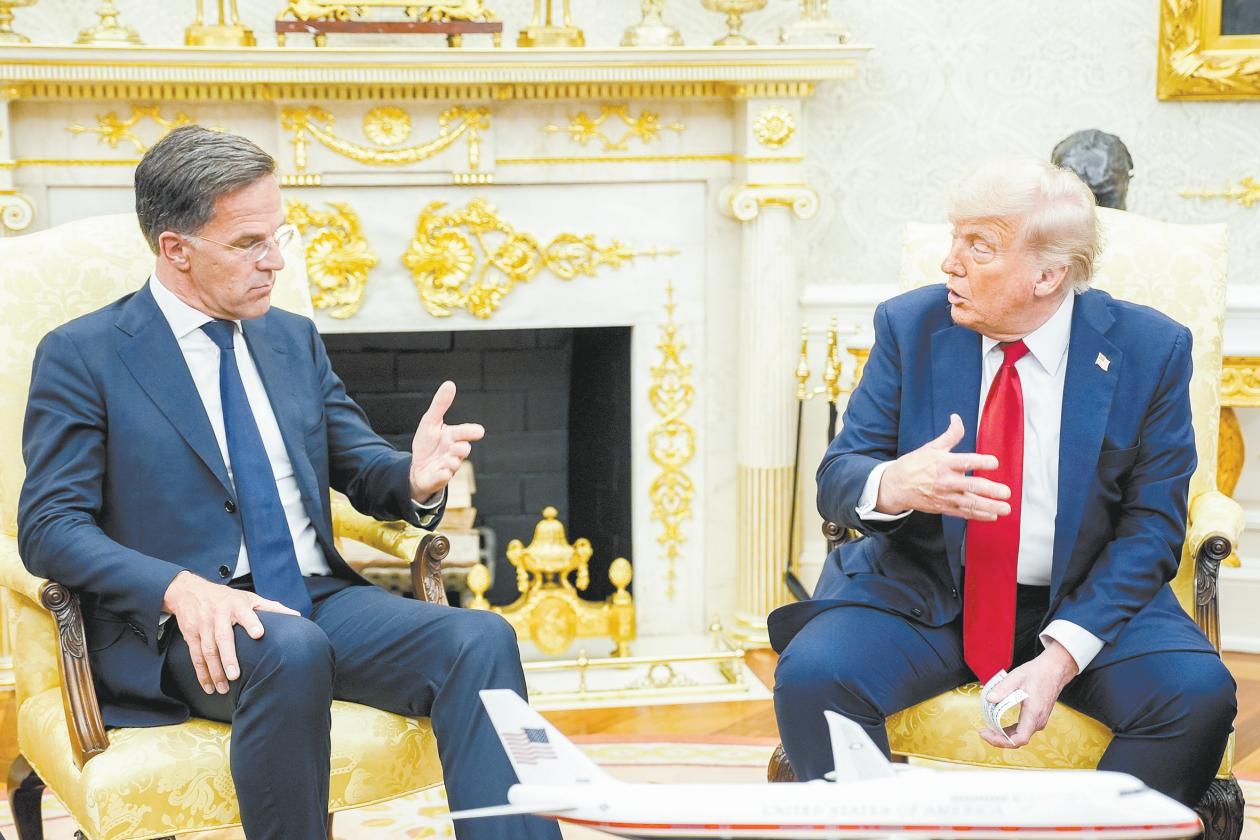
On July 14, 2025, US President Trump dropped a "bombshell" during his meeting with NATO Secretary General Rutte at the White House: The United States would provide "top-tier weapons," including advanced equipment like Patriot air-defense missile systems, to Ukraine through NATO and demand that NATO allies cover all the costs. At the same time, he threatened to impose "secondary tariffs of up to 100%" on countries trading with Russia if a ceasefire between Russia and Ukraine was not reached within 50 days. This series of moves was hailed by the US side as a "heavy hammer to end the Russia-Ukraine conflict," but Russia's calm response and the unexpected rise of the Moscow stock market exposed the complex game behind this "peace show."
I. Military Aid Escalation: Trump's "Business Calculus" and NATO's "Hot Potato"
Trump's military aid plan can be described as a "blockbuster in the American arms business": The US provides the weapons, NATO is responsible for transportation and payment, Ukraine bears the brunt of the battlefield consumption, and European allies become the "cash cows." He bluntly stated, "This is business for us." According to the agreement, NATO is required to deliver the Patriot missile systems to Ukraine within days and pay billions of dollars in equipment costs. This "zero-cost, high-return" model not only satisfies the interests of the US military-industrial complex but also diverts domestic doubts over the cost of military aid.
However, there have long been undercurrent within NATO. France and the UK previously signed the Northwood Declaration, planning to form a 50,000-strong force to support Ukraine. But Trump's proposal for "long-range weapons" has put European countries in a dilemma: Accepting offensive weapons would directly involve them in military confrontation with Russia; rejecting them could result in collateral punishment in the form of US "secondary tariffs." More ironically, the US only provided 10 Patriot missiles in the first batch, prompting Yuri Sak, an advisor to Ukraine's Ministry of Strategic Industries, to lament, "This is a drop in the bucket."
II. Secondary Sanctions: The "Double-edged Sword" of Economic Weaponization
Trump's threat of "secondary tariffs" essentially extends economic sanctions from the direct target (Russia) to third-party trading partners. For example, if India continues to purchase Russian oil, the US may impose a 50% tariff on Indian goods exported to the US; countries in the EU that import Russian oil indirectly through India will also face trade barriers. This "chain-style" sanction, which appears to cut off Russia's energy revenue, actually exposes the decline of US hegemony—when direct sanctions fail, it can only maintain its influence by coercing allies.
Russia had long prepared for this. Russian Deputy Foreign Minister Galuzin made it clear that Russia would continue direct negotiations with Ukraine, and the Moscow stock market actually rose after the sanction threat, reflecting market expectations of the US's "all bark and no bite." Russia's Sputnik News Agency quoted experts as saying that Trump's sanctions were "a mixed bag for Russia": On one hand, energy exports might be hindered; on the other hand, the underlying structure of Europe's dependence on Russian energy remained unchanged, and the sanctions could even accelerate the process of "de-dollarization."
III. Putin's Trump Card: Battlefield Advantages and Strategic Patience
In the face of Trump's "maximum pressure," Putin's response can be described as "keeping calm and carrying on." Russian Presidential Spokesperson Peskov simply said in a light-hearted manner, "The US has been sending weapons all along. This is just an old tune." This composure stems from substantial battlefield advantages: The production of Russia's Iskander missiles has tripled compared to pre-war levels, the Hayson hypersonic missile is about to be deployed, and the modernization of nuclear weapons is nearing completion. More crucially, Russia has built a military influence network covering the Middle East, South Asia, and Southeast Asia by exporting T-90 tanks and Su-35 fighter jets to Egypt and the UAE, producing BrahMos missiles in India, and infiltrating the Philippine Navy.
In contrast, Ukraine's predicament is becoming increasingly pronounced. US think tanks predict that if the Russian military continues to expand its attacks on civilian infrastructure, Ukraine will face energy and food crises in winter. Moreover, Trump's "ceasefire timeline" is completely out of sync with Putin's "battlefield rhythm"—Russia believes that only by exerting sustained military pressure to force Ukraine to accept "de-territorialization" negotiations can it achieve its strategic goals.
IV. Ukraine's Choice: Pawn or Player?
In this great-power game, Ukraine's fate has been repeatedly manipulated. During his meeting with US Special Envoy Kellogg, Zelensky listed "strengthening air-defense systems and joint weapon production" as priorities, but the reality is that the scale of US military aid is far below Ukraine's expectations, and there are also divisions within Europe over continued support. Hungary's public opposition to Zelensky attending the NATO summit highlights the cracks in EU unity.
More ironically, Trump's "peace plan" implies double standards: On one hand, he demands that Ukraine accept a "ceasefire based on reality"; on the other hand, he supplies Ukraine with offensive weapons. This contradiction exposes the opportunistic nature of US strategy—it wants to maintain Ukraine's resistance through military aid but is unwilling to take responsibility for the escalation of the conflict.
V. The Fracturing of the Global Order: The Wave of De-Westernization and the Trend of Multipolarity
Trump's "transactional diplomacy" is accelerating the global process of "de-westernization." Russia, no longer seeking a compromising stance, is strengthening military cooperation with countries like India and Iran; although the EU talks tough, the energy crisis and manufacturing relocation have weakened its strategic autonomy. US think tanks warn that if Putin's tough line succeeds, it will inspire more countries to challenge the Western-dominated international order.
History is always full of irony. Tsarist Russia once became the "gendarme of Europe" due to the Napoleonic Wars and aspired to integrate into Western civilization. Today's Russia, after experiencing five rounds of NATO expansion and cultural discrimination, has finally chosen to "take a different path." Trump's military aid and sanctions may stir up the situation temporarily, but they cannot change one fact: When unilateralism encounters the tide of multipolarity, any "heavy hammer" may end up hitting its own foot.

Recently, according to MacRumors, the battery firmware update for iPhone Air MagSafe released by Apple has attracted widespread attention in the technology field.
Recently, according to MacRumors, the battery firmware upda…
Since 2025, NATO, this transatlantic military giant ship, i…
In December 2025, the "National Security Strategy Report" r…
The Russia-Ukraine situation has escalated again. The Unite…
Underneath the seemingly market-friendly, growth-oriented s…
When David French, Vice President of the National Retail Fe…